Africa
The Americas
Asia (West)
Asia (East) & Oceania
More Information:
What is Home Roasting?
What is Green Coffee? What are
Green Coffee Beans?
What are Qualities of Good Coffee?
How to Choose Green Coffee Beans?
All Home Coffee Roasting Primers
Get Started:
Home Roasting for Beginners
Buy Premium Green Coffee Beans
Buy Home Coffee Roasters
Coffee flavor profiles vary so dramatically, that when searching for the perfect cup you never know where you may find it – basic understandings of variations between different Coffee Regions, different Strains or “Cultivars,” and different Processing Methods are essential to finding your favorite coffees.
Where does the best coffee grow?
Coffee trees are able to grow only at relatively higher altitudes within the tropics (specifically, between 25 degrees north and 30 degrees south, and between 1000-3000 feet for Robusta or 2000-6000 feet for Arabica), and because most high-quality Arabica strains are very sensitive and finicky, cultivation opportunities for premium coffees are really very limited (you will never ever get that Norwegian or Floridian coffee you’ve been dreaming about – sorry!).
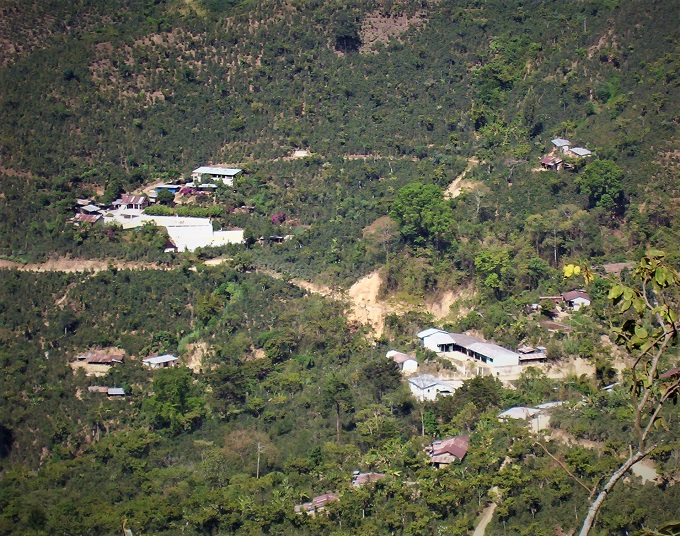
Steep slopes of Guatemala’s Finca Vista Hermosa
Several distinct species of Coffea trees are all native to Africa – some of the beans harvested in Ethiopia still come from naturally-occurring wild coffee forests! – but farmers have successfully cultivated coffee in over 50 countries all over the world. The two commercially farmed species evolved in different climates, and therefore they have different cultivation needs: Coffea arabica is native to mountainous regions of Ethiopia, Sudan, and Kenya. Coffea canephora (commonly known as Robusta) is endemic throughout Sub Saharan Africa, meaning that it grows more easily in adverse conditions and lower altitudes.
Each distinct variety and each particular growing season yield their own special beans, but even more importantly the unique soils and climates of widespread regions produce distinctive terroirs, just like fine wines. For new home coffee roasters, a basic understanding of the tendencies of major coffee-producing regions is essential, as it will make it easier to identify varieties that you may like, or in some cases dislike.
Here is a simple list to help you get started. As always, be sure to read the tasting and roasting notes for each lot – these broad descriptions are just general trends, and many of the boutique micro-lots that we carry really break all the rules!
Africa
AFRICA tends to produce coffees that are very bright and spicy, with big bold juicy flavors. Many conventional coffee drinkers are shocked by the unexpected flavors in their first African cup!
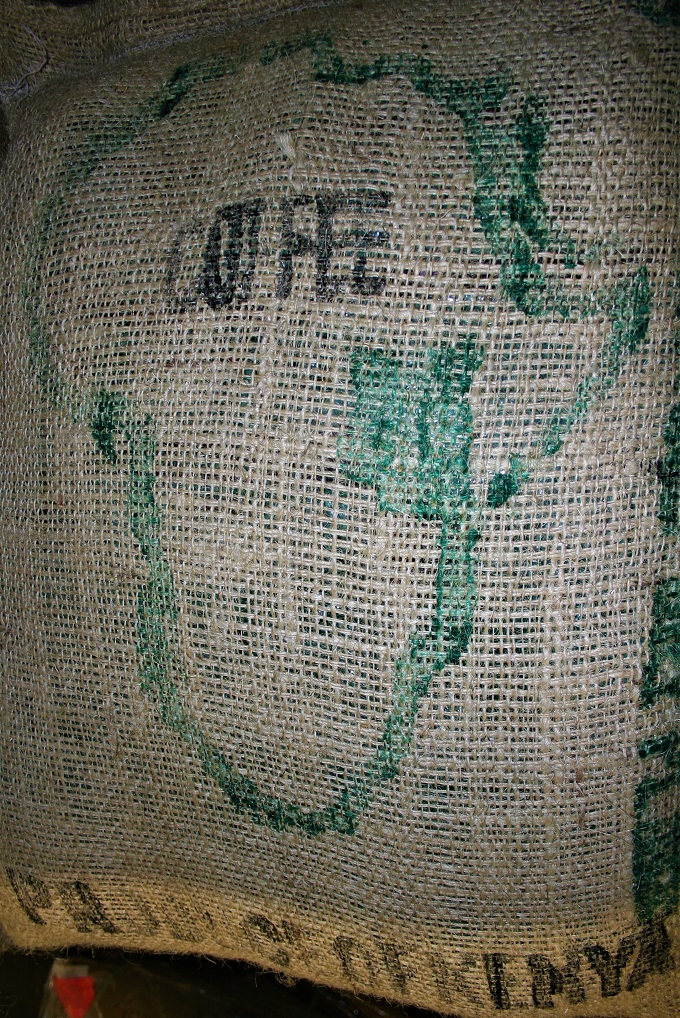
Sacks of coffee from Kenya proudly proclaim their
African origin
Ethiopia (Natural): The strongest fruity flavors tend to be found in Ethiopian Naturals; that elusive “blueberry note” is rarely present in beans from other regions. Many claim that Ethiopia is the birthplace of coffee, and when villagers collect wild beans from uncultivated coffee forests to this day, it is hard to refute. Ethiopian coffees often have these wild unpredictable beans thrown into the mix, meaning that Ethiopian Naturals are sometimes strange and very inconsistent. Other unique and elusive flavor notes to look for in Ethiopian Naturals include pear, prune, jasmine, lavender, rose, cinnamon and/or clove!
Ethiopia (Washed): Dramatically different from naturals, Washed Ethiopians are much more reliable but still pretty flashy and novel compared to many other coffee regions, dominated by subtle aromatic citrus and floral flavors, often presenting lemon, bergamot, tea, peach, and/or honeysuckle notes.
Kenya: Intense and distinctive, Kenyan coffees offer very high acidity, syrupy body, powerful aromas, and tend toward grapefruit, strawberry, cocoa, molasses, and a variety of floral and herbal notes (these herbal notes can tend toward grassy/vegetative when under-developed, but add depth to the bright acidic qualities when roasted just right).
Burundi, Rwanda, Tanzania, and other African regions: Similar yet less intense than Kenyans, African coffees generally tend to be described as offering above-average acidity coupled with floral vanilla, chocolate, raisin and berry notes. Kenya’s high standards are unmatched in other African countries, so the quality and consistency of these coffees may be less reliable.
Americas
THE AMERICAS include many locations with fertile volcanic soils that are ideal for coffee trees, but each is unique and coffee flavor profiles vary significantly from one micro-region to the next. Compared to African coffees, American coffees are generally more mild and balanced, making them very popular.
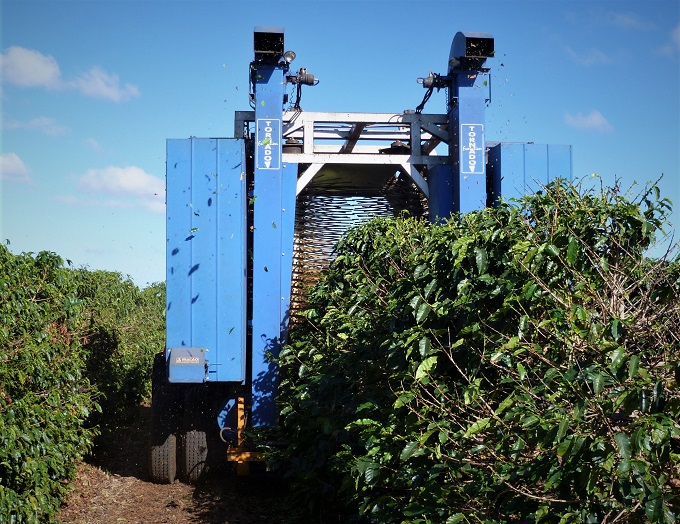
Mechanical Harvester on Brazil’s Sao Francisco Estate
Brazil: With a long tradition of coffee cultivation and enormous plantations, Brazil easily leads in overall coffee production with a whopping 30% of the global total! Descriptors often attached to Brazil coffees include clean, sweet, mild, caramel, peanut and cinnamon.
Colombia, etc: Offering what are arguably the best-balanced cup profiles in the world, Colombia has become almost synonymous with coffee, and it ranks third in total production. The Colombian tradition is very different than that of Brazil, because it is composed mostly of tiny fincas (family farms) rather than vast plantations. This means that artisanal micro-lots can vary somewhat due to each farm’s preferred growing and coffee processing methods, but in general Colombian coffees are known for mild, sweet, nutty, medium-acidity flavors. Coffees from Venezuela, Ecuador, Peru, and Bolivia are usually similar.
Costa Rica and Panama: These tiny countries are full of steep mountains that create distinctive micro-climates, meaning that coffees can vary considerably even when grown just a few miles apart. Common descriptors include crisp, spicy, floral, lemongrass, chocolate, and honey. But there is astounding variety – though small, this isthmus region stands out because of so many producers who are on the cutting edge of experimentation with innovative coffee processing techniques.
Guatemala, Honduras, Nicaragua, and other Central American Regions: Not far away, yet differing significantly due to mountainous micro-climates, many Central American coffees are labeled by local region; some of these regions, like Guatemala’s Huehuetanango or Antigua, have become world famous for their superior artisanal coffees. Honduras and Nicaragua are similarly loved for their rich history of coffee cultivation, and many coffee connoisseurs will recognize regional names like Copán and Matagalpa. Though flavor profiles can vary widely, most Central American coffees are generally described as delicate, lightly spicy and floral with medium acidity, and may present pear, honey, hazelnut, chocolate, and vanilla notes. Coffees from El Salvador or Belize may be similar.
Mexico: The largest producer in North America, Mexico has a coffee industry based mostly on small family farms. Rarely practicing the meticulous quality-control that is seen in other countries, Mexican coffee farmers usually sell bargain beans. But a good boutique lot can be really lovely, brewing a light and clear sweet cup similar to Brazilian.
Jamaica, Haiti, and other Caribbean Coffee Regions: Some Caribbean islands have towering volcanic mountains with beautiful abundant soil, perfect for coffee cultivation. Because of limits to scale, the total volume of Caribbean coffees is quite small, which tends to raise prices – authentic Jamaican Blue Mountain beans are among the most expensive in the world! Caribbean coffees tend to have full yet subdued flavor profiles. There is a lot going on in that cup – cocoa, dark fruit, floral, spicy, nutty, maybe a little earthy too – yet it remains overall very mellow and soft, with a rich mouth feel and a pleasant balance.
Hawaii: Similar to the Caribbean nations, tiny islands severely limit the scale of Hawaiian coffee production but the fertile soil and predictable rainy/dry seasonal cycles seem to be pretty ideal for coffee cultivation. Hawaii boasts some of the most well-loved (and expensive!) coffees in the world, like Kona and Blue Mountain (Hawaii’s big island is one of only three places in the world that this finicky cultivar can tolerate). Hawaiian coffees tend to be medium-acidity, diverse and well-balanced but tending toward darker tones, resembling Caribbean cup profiles but a little more delicate.
Asia (West)
ASIA is the largest continent, and though most of it is well outside of the “bean belt,” the widely-spread and climatically-diverse growing coffee regions which surround the Indian Ocean yield a very wide range of coffees. We have separated Asia into West and East to make it easier to grasp the general tendencies of two distinctly different types of climates.
Yemen: Some say that this is the birthplace of coffee, though most give that credit to Ethiopia. The frequency with which one finds ancient coffee trees planted in the gardens of old family estates makes it clear that Yemen has been a leader in cultivation and improvement from the very beginning – the first carefully bred commercial cultivars (Typica, Bourbon, and Mocha) all originated in Yemen. Due to very dry climate, Yemen coffee beans tend to be small and maybe a little ugly, and they are always natural processed. Letting fruit dry and ferment on the beans gives them surprisingly diverse, yet well-rounded and delicate flavors, and many coffee connoisseurs get very excited about boutique Yemen beans. Relatively rare nowadays, Yemen coffees tend to sell quickly because they are prized for unique spicy nutmeg and cinnamon tones, as well as the rich, powerfully sweet chocolate flavors that made “Mocha” world-famous.
India: Some regions of South India have steep volcanic slopes that support biodiverse rainforests and are suitable for growing both tea and coffee, as well as spices such as cardamom, cinnamon, and pepper (sometimes all on one farm!). It seems appropriate that Indian coffees are known for aromatic, spicy, robust and intense dark fruit flavors.
Asia (East) & Oceania
OCEANIA includes Australia and some portions of that big mess of islands that is mostly considered part of Asia. It is always a little difficult to decide where one continent ends and another begins (geographers have been arguing over such things for centuries!), but for the purposes of this primer, separating East Asia countries like Vietnam and Indonesia and comparing them with Oceania countries like Papua New Guinea makes a lot of sense.
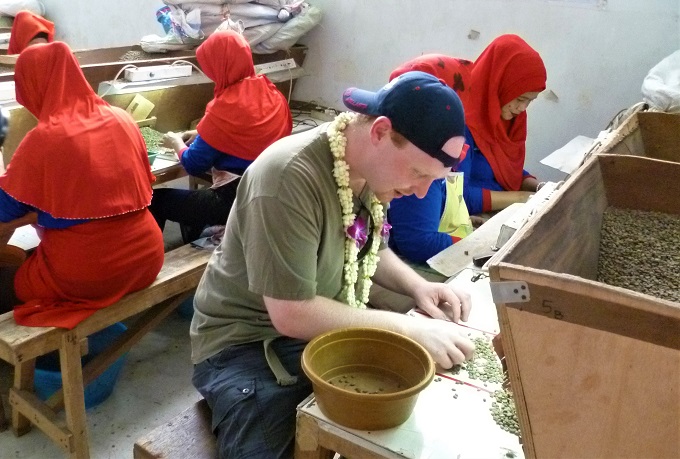
Jon learns about hand-sorting methods in
Java, Indonesia
Indonesia, etc: The 17,000 volcanic islands that make up the vast country of Indonesia are perfect for coffee cultivation, and it ranks fourth in overall production, just a hair behind Colombia. Different islands impart different nuances, and many coffee aficionados are familiar with names like Java, Sumatra, and Sulawesi. In general, most Indonesian coffees are in the same ballpark though. Their distinctive flavor profile is due mostly to a special artisanal processing method adapted to the extremely wet local climate and the transportation challenges posed by island life. With very low acidity, taste descriptors are significantly different than most coffee regions, like earthy, woody, caramel, creamy, rich and full-bodied. Indonesian coffees are almost always dark-roasted, producing a velvety mouthfeel that is unparalleled in other cups. Coffees from Malaysia or other nearby islands like Timor-Leste may be similar.
Papua New Guinea: With their own unique growing regions and processing methods, PNG coffees may be significantly different than Indonesians. Sweetness stands out, and common descriptors include bright, syrupy or “full-bodied,” notes of honey, melon, cocoa. Papua New Guinea’s Wahgi Valley is one of only three places in the world where the famous Blue Mountain cultivar can grow.
Vietnam, etc: It may be surprising to learn that the second-largest coffee producing nation is Vietnam. Robusta or Robusta-Arabica hybrids make up the vast majority of coffee produced in Vietnam and other Southeast Asian countries like Laos, Thailand, and Myanmar, meaning that they mostly get blended into bargain coffees. The strong pungent flavors of Robusta are why the Vietnamese style of coffee preparation is always insistent on copious sugar and condensed milk! But don’t just write it off – we seldom carry Vietnamese coffees, but once in a while we may be pleasantly surprised by a really special top lot displaying strong dark tones and rich robust body, perfect for dark roasts.
China, etc: We very rarely see coffees coming from other East Asian countries like China, Taiwan, and the Philippines. This is partly because coffee cultivation is a relatively recent development in East Asia (but is now growing very rapidly, as evidenced by Vietnam). China also produces a surprising volume of coffee nowadays (it falls just a little short of being in the top 10!), but almost all of it gets consumed domestically, and they snap up most everything from nearby countries too. However, we do occasionally see special top lots exported from these regions. Earthy, malty, and bitter baker’s chocolate tones tend to dominate, making these coffees good for dark roasts.
Remember, many regions produce excellent coffees – it’s really just a matter of taste! The most important factors going into an exceptional cup are attentive farming and expert processing, freshness, and that perfect roast that brings out each bean’s unique strengths. Be sure to always consult tasting and roasting notes to better understand the potential of each unique lot.
SEE OUR LIST OF PREMIUM GREEN COFFEE FOR HOME ROASTING
Read our other primers: Coffee Cultivars, Coffee Processing Methods, and Coffee Roast Styles

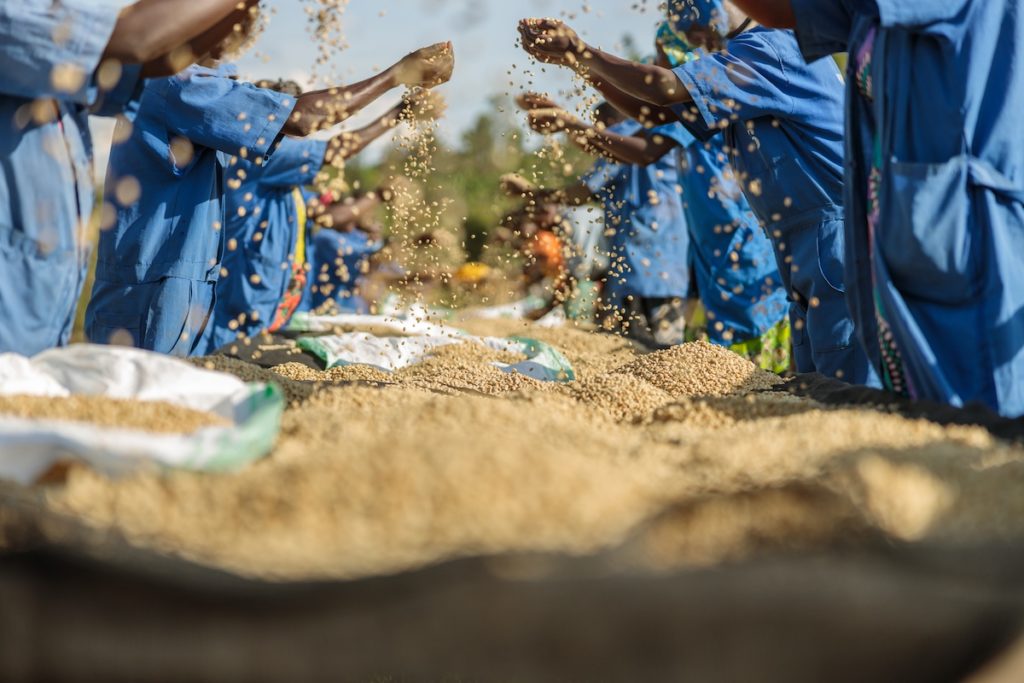
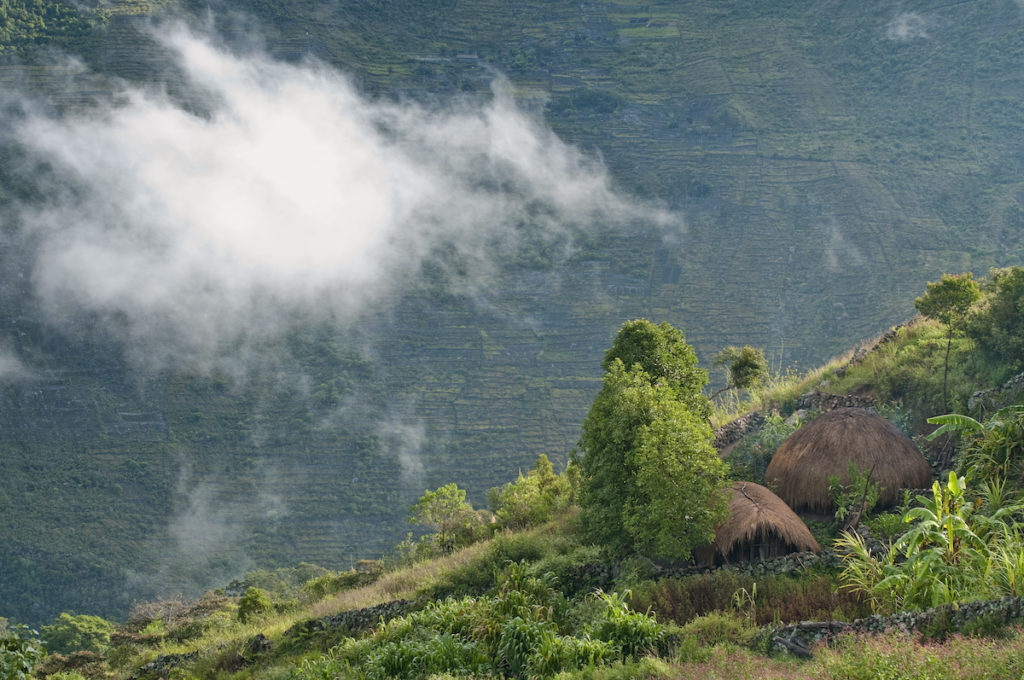

Thanks for this list! I just started home roasting and its so fun. Excited for my first order to arrive.